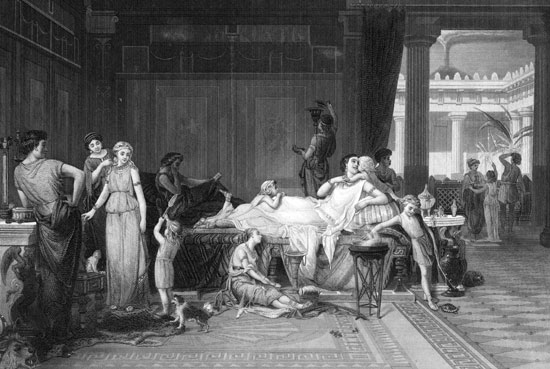I am excited to talk about today's historical post. Using T.L. Higley's new book, Pompeii: City on Fire , I'm going to talk about the city of Pompeii and the mountain that buried it back in 79 AD, Vesuvius. A few years back I was in a play that begins a few days after the eruption and before we could begin learning our parts, we had to learn about the time, society, fashion, and much more. The research was lots of fun and I always love learning about historical facts and occurrences. So let's begin!
, I'm going to talk about the city of Pompeii and the mountain that buried it back in 79 AD, Vesuvius. A few years back I was in a play that begins a few days after the eruption and before we could begin learning our parts, we had to learn about the time, society, fashion, and much more. The research was lots of fun and I always love learning about historical facts and occurrences. So let's begin!
What is Pompeii? It was a Roman town-city that is close to the modern city of Naples. Just pick up Higley's Pompeii" City on Fire and you will learn a LOT about the culture and people of this city. Because this city was buried by the volcano and preserved so well for so long (Don't know what I'm talking about? Keep reading and I will explain) a lot can be discovered about the 1st century roman life. Everything is well preserved because of the eruption - forums, baths, houses, and even many out-of-town villas.
Pompeii was a very lively place. Money abounded. There was an amphitheater, a palaestra with a swimming pool, and an aqueduct that gave water to many fountains, public baths, and private houses and business. The apphitheatre, which is where Ariella is in Pompeii: City on Fire, has been cited by modern scholars as a model in sophistacated design. Especially in the area of crowd control. Which is something we read about in Higley's book. (Don't you just love to learn so much historical while enjoying an awesome adventure?!)
So what happened to Pompeii (and Herculaneum--another city that shared similar fates as Pompeii)? Two words -- Mount Vesuvius. The volcano erupted in 79 AD. The unsuspecting people of Pompeii was taken by surprise and, over the course of two days, both cities were buried in ash, rock, and finally, a lava flow that completely buried them alive.
I was able to go and see an exhibit of Pompeii and Vesuvius and saw the remains from those cities. Pottery, statues, and even the victims bodies, buried and preserved all these years. (as you can see from these pictures.) After that eruption, the city was lost for over 1700 years before it was accidentally rediscovered in 1749.
I never tire of reading about Pompeii and Vesuvius. When I saw that Higley was publish a book on it, I knew I had to read it. And was not disappointed. I learned so much more about the city, time period, and people who lived there. As I read about Cato and Ariella's adventures, my heart went out to all the people who lost there lives during the eruption.







2 comments:
ewwwwwww
Wat happened in pompeii is Unbeliveable!/ If i was there i woul'd nevr know wat to do,u can never exscape from the eruption!?!?!? So im greatfull 2 be born in ireland at that time.
Post a Comment